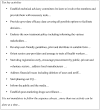From chloroquine to artemisinin-based combination therapy: the Sudanese experience
- PMID: 16879742
- PMCID: PMC1590042
- DOI: 10.1186/1475-2875-5-65
From chloroquine to artemisinin-based combination therapy: the Sudanese experience
Abstract
Background: In Sudan, chloroquine (CQ) remains the most frequently used drug for falciparum malaria for more than 40 years. The change to artemisinin-based combination therapy (ACT) was initiated in 2004 using the co-blister of artesunate + sulfadoxine/pyrimethamine (AS+SP) and artemether + lumefantrine (ART+LUM), as first- and second-line, respectively. This article describes the evidence-base, the process for policy change and it reflects the experience of one year implementation. Relevant published and unpublished documents were reviewed. Data and information obtained were compiled into a structured format.
Case description: Sudan has used evidence to update its malaria treatment to ACTs. The country moved without interim period and proceeded with country-wide implementation instead of a phased introduction of the new policy. The involvement of care providers and key stakeholders in a form of a technical advisory committee is considered the key issue in the process. Development and distribution of guidelines, training of care providers, communication to the public and provision of drugs were given great consideration. To ensure presence of high quality drugs, a system for post-marketing drugs surveillance was established. Currently, ACTs are chargeable and chiefly available in urban areas. With the input from the Global Fund to fight AIDs, Tuberculosis and Malaria, AS+SP is now available free of charge in 10 states.
Conclusion: Implementation of the new policy is affected by the limited availability of the drugs, their high cost and limited pre-qualified manufacturers. Substantial funding needs to be mobilized by all partners to increase patients' access for this life-saving intervention.
Figures
References
-
- Malik EM, Saeed OK. Malaria in Sudan: past, present and the future. Gazera Journal of Health Sciences. 2004;1:47–53.
-
- Himeidan Yel-S, Dukeen MY, El-Rayah el-A, Adam I. Anopheles arabiensis: abundance and insecticide resistance in an irrigated area of eastern Sudan. East Mediterr Health J. 2004;10:167–174. - PubMed
-
- Abdel-Hameed AA. Antimalarial drug resistance in the Eastern Mediterranean Region. East Mediterr Health J. 2003;9:492–508. - PubMed
-
- Yousif MA, Adeel AA. Antimalarials prescribing pattern in Gazera State: precepts and practices. East Mediterr Healh J. 2000;6:939–947. - PubMed
MeSH terms
Substances
LinkOut - more resources
Full Text Sources
Research Materials
Miscellaneous





